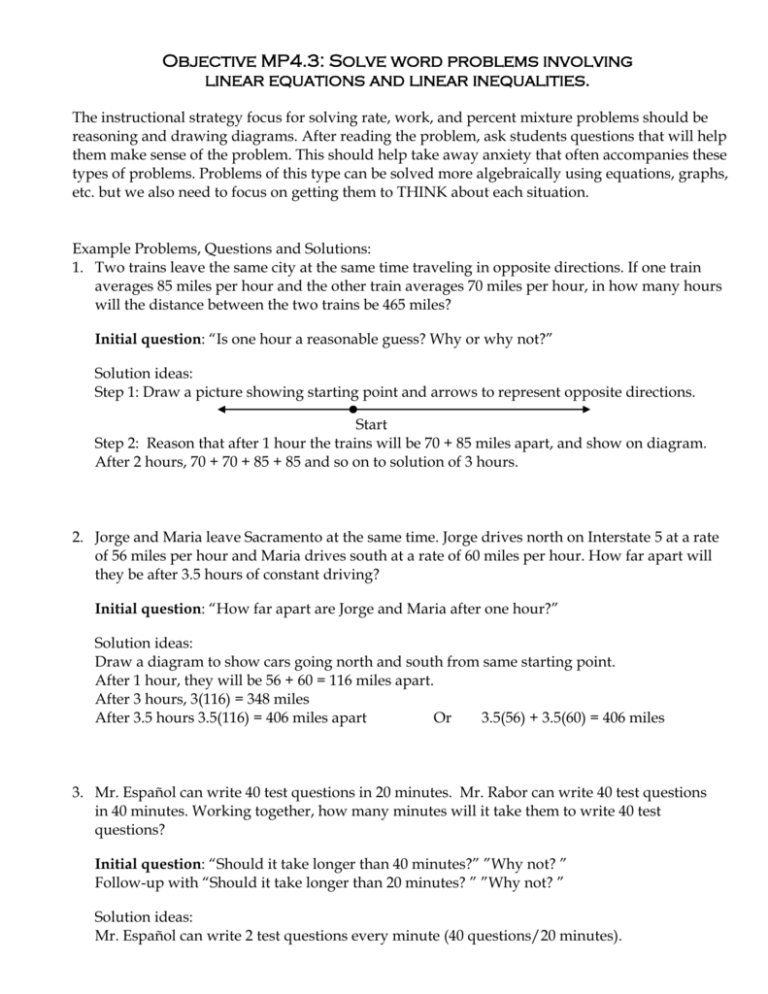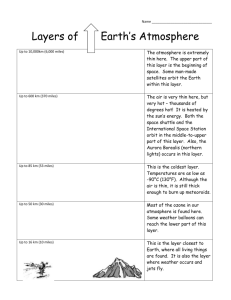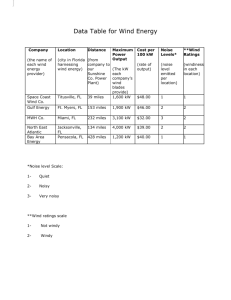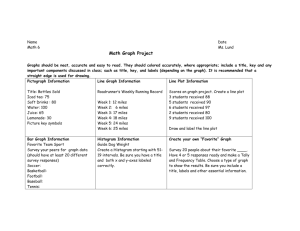word - My eCoach
advertisement

Objective MP4.3: Solve word problems involving linear equations and linear inequalities. The instructional strategy focus for solving rate, work, and percent mixture problems should be reasoning and drawing diagrams. After reading the problem, ask students questions that will help them make sense of the problem. This should help take away anxiety that often accompanies these types of problems. Problems of this type can be solved more algebraically using equations, graphs, etc. but we also need to focus on getting them to THINK about each situation. Example Problems, Questions and Solutions: 1. Two trains leave the same city at the same time traveling in opposite directions. If one train averages 85 miles per hour and the other train averages 70 miles per hour, in how many hours will the distance between the two trains be 465 miles? Initial question: “Is one hour a reasonable guess? Why or why not?” Solution ideas: Step 1: Draw a picture showing starting point and arrows to represent opposite directions. Start Step 2: Reason that after 1 hour the trains will be 70 + 85 miles apart, and show on diagram. After 2 hours, 70 + 70 + 85 + 85 and so on to solution of 3 hours. 2. Jorge and Maria leave Sacramento at the same time. Jorge drives north on Interstate 5 at a rate of 56 miles per hour and Maria drives south at a rate of 60 miles per hour. How far apart will they be after 3.5 hours of constant driving? Initial question: “How far apart are Jorge and Maria after one hour?” Solution ideas: Draw a diagram to show cars going north and south from same starting point. After 1 hour, they will be 56 + 60 = 116 miles apart. After 3 hours, 3(116) = 348 miles After 3.5 hours 3.5(116) = 406 miles apart Or 3.5(56) + 3.5(60) = 406 miles 3. Mr. Español can write 40 test questions in 20 minutes. Mr. Rabor can write 40 test questions in 40 minutes. Working together, how many minutes will it take them to write 40 test questions? Initial question: “Should it take longer than 40 minutes?” ”Why not? ” Follow-up with “Should it take longer than 20 minutes? ” ”Why not? ” Solution ideas: Mr. Español can write 2 test questions every minute (40 questions/20 minutes). Mr. Rabor can write 1 test question every minute (40 questions/40 minutes). So, together they can write 3 questions every minute. 40/3 is 13.3 so it will take them a little more than 13 minutes to write the 40 questions together. Note: Find more examples and problems in Moving with Math™ pages 202-205.









